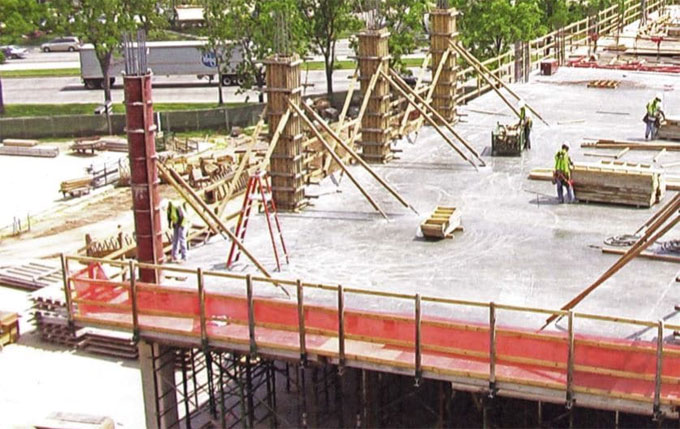If the safety plans for formwork system remain perfect, construction project will be completed according to approved construction practice and without unnecessary hazards like failure of formwork and consequent delay in construction and possible loss of life. Normally, safety will be commenced in the planning and management of a project.
The safety of workers and the public is mainly dependent on the construction work supervision, equipment deployment practices, and construction method used.
Formwork designers, project planners, and managers should abide by the requirements of relevant standards like OSHA regulation with the purpose of providing good safety planning.
1. Supervision and Inspection: Supervision work should be perfect throughout placing formwork, concrete pouring, and stripping of formworks for maintaining safety in the use of forms.
A supervisor has to take the responsibility for the construction of formwork based on the design and deploying a secure erection method to get rid of overloading of members.
Rectifications of the false work, forms, or erection method in construction site should be performed as per suggestions of the form designer. The application of unusual loads should be controlled when the formwork system is not designed for such loads.
2. Platforms and Access for Workers: There should be proper working platform for the works to be accomplished at elevated positions. Long ladder to the tops of false work should be rest or passing platform. In specific structures like bridges, special scaffolds should be utilized or any other appropriate equipment for the detachment of decks and piers forms.
There should be proper safety signs and barriers to restrict the entry of the unauthorized individuals to the working area throughout erection and striping formwork system. Platforms and access means for worker should be adhered to suitable codes like OSHA requirements.
3. Monitoring Concreting Practices: Controlling concrete pouring plays an important role in formulating the proper safety plan. The sequence and rate of concrete placement should take limitations into account which are provided in the formwork drawings.
At the time of placing concrete, unbalanced form loading should not occur. As for example, in beam and slab construction, initially fill the beams and then work outward uniformly on both sides while setting the slab. The durability of the formwork system is increased in a column-and-slab structure by concreting the columns minimum one day before placing the slab.
Hardened concrete in the columns contributes to extra lateral stiffness to the formwork structure all through the concreting of the slab. Repeatedly, Reinforced concrete column is built up and then erection of floor system is started.
4. Advancement of Soil Bearing and Bracing: Normally, the condition of soil is unidentified while designing the forms and scaffoldings; assumed bearing capacity is applied. Therefore, the contractor should verify whether the bearing strength of the soil at construction site is higher or smaller as compared to the one accepted during design phase. If soil bearing strength is dubious, then it’s stability can be improved by tamping or making a cover with layer of crushed stone. Formworks should be designed to resist gradual collapse caused by localized failures.
5. Shoring and Reshoring: Setting of out of plumb shores, bent jacks, and defective timber should not be done else these supporting elements would support only a small area of design loads. Throughout Concreting, forms should be checked repeatedly to detect problems and instantly rectify them.

No comments:
Post a Comment